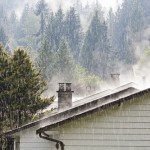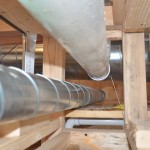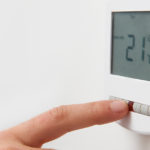 The air filter in a furnace is the best defense against damage to an HVAC system and poor indoor air quality in a home. The furnace filter traps particles such as dust, animal dander, pollen, mold spores and dust mites, preventing the buildup of these particles on the furnace’s fan and heat exchanger.
The air filter in a furnace is the best defense against damage to an HVAC system and poor indoor air quality in a home. The furnace filter traps particles such as dust, animal dander, pollen, mold spores and dust mites, preventing the buildup of these particles on the furnace’s fan and heat exchanger.
Dust buildup on these components is a common culprit for problems with furnaces that often require expensive repairs. A dirty filter also impedes air flow into the furnace, making it work harder, raising energy costs and causing unnecessary wear on the system.
In addition to affecting the performance of the furnace, a clean filter can greatly improve indoor air quality. According to the EPA, the air in a home is far more contaminated than the air outside. Contaminants in indoor air can aggravate allergies and asthma, as well as cause a number of respiratory illnesses.
The filter should be checked every month and replaced when dirty. Because the filter may restrict airflow to the furnace it is very important that cold air returns are not blocked by furniture. They should also have good quality grilles installed that are not easily damaged.
The air filter is generally found in the blower compartment of the furnace, between the cold-air return and the furnace itself. They come in various sizes but most are 1” thick. Some systems use a separate box that mounts onto the furnace so that much thicker 4” or 5” filters can be used.
Out with the old filters, in with the new ones
Open the furnace door and the old filter should slide out easily. The new one needs to be inserted so that the arrows point in the direction of the airflow, or toward the furnace.
There are various types of filters and choosing the right one for the needs of the customer and their furnace is important to maintaining optimum airflow in the system and improving the quality of the air in the home.
Most filters are disposable and either made of fiberglass or pleated polyester and paper. There is also the washable type that often uses cotton and either a plastic or metal frame instead of paper and can be reused for years. Both these varieties can come with an electrostatic option. This type uses self-charging fibers to attract particles.
Filters are rated on the Minimum Efficiency Reporting Value (MERV) scale. The American Society of Heating, Refrigeration and Air Conditioning Engineers (ASHRAE) developed this scale in 1987.
MERV ratings range from 1 to 20. Higher MERV ratings mean a more effective filter, trapping a higher percentage of smaller particles in the home’s air.
- MERV 1-4 filters are very inexpensive and do little to improve indoor air quality except trap dust mites and pollen. They are disposable, usually made from spun fiberglass and only provide the minimum amount of protection against dust buildup in the furnace.
- MERV 5-8 filters are the most common choice for homeowners and are often made from pleated polyester or cotton paper. They are of medium quality and will trap smaller particles than MERV 1-4 filters. This includes dust mite debris, mold, spores, animal dander and hair spray.
- MERV 9-12 filters are of higher quality and a better choice for those who suffer from allergies and asthma. In addition to particulate matter, these filters also trap chemical fumes, smoke and other common allergens.
- MERV 13-16 filters are usually much thicker and generally used in medical buildings and other commercial properties. They are of very high quality, trapping bacteria and some viruses.
- MERV 17-20 filters also qualify as HEPA filters. These highly efficient filters aren’t used in residential HVAC systems because they would block too much airflow to the unit.
Before upgrading the air filter for a furnace, check the specs of the system to determine what type of filter it will accommodate. Higher MERV filters can restrict airflow to some systems, potentially causing damage to the furnace. It’s essential to balance the air cleaning qualities with airflow to your furnace when choosing a filter.



